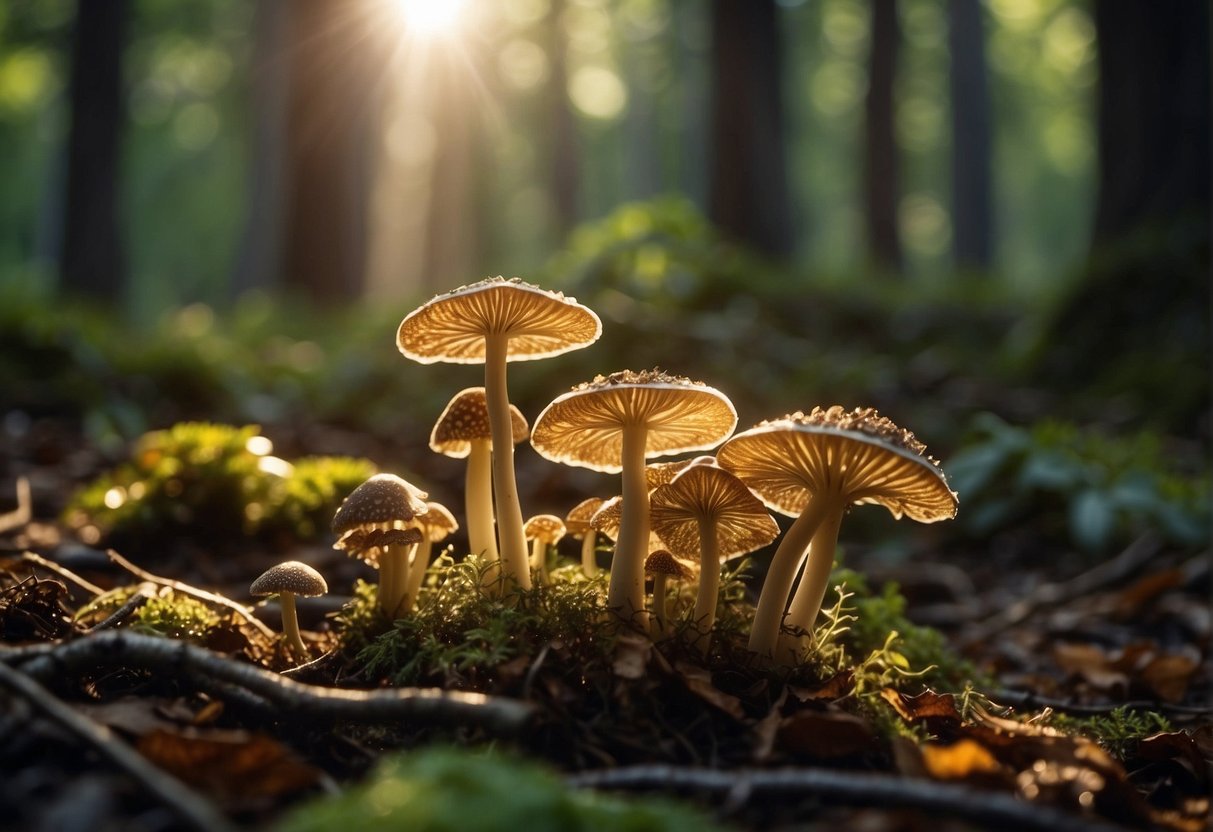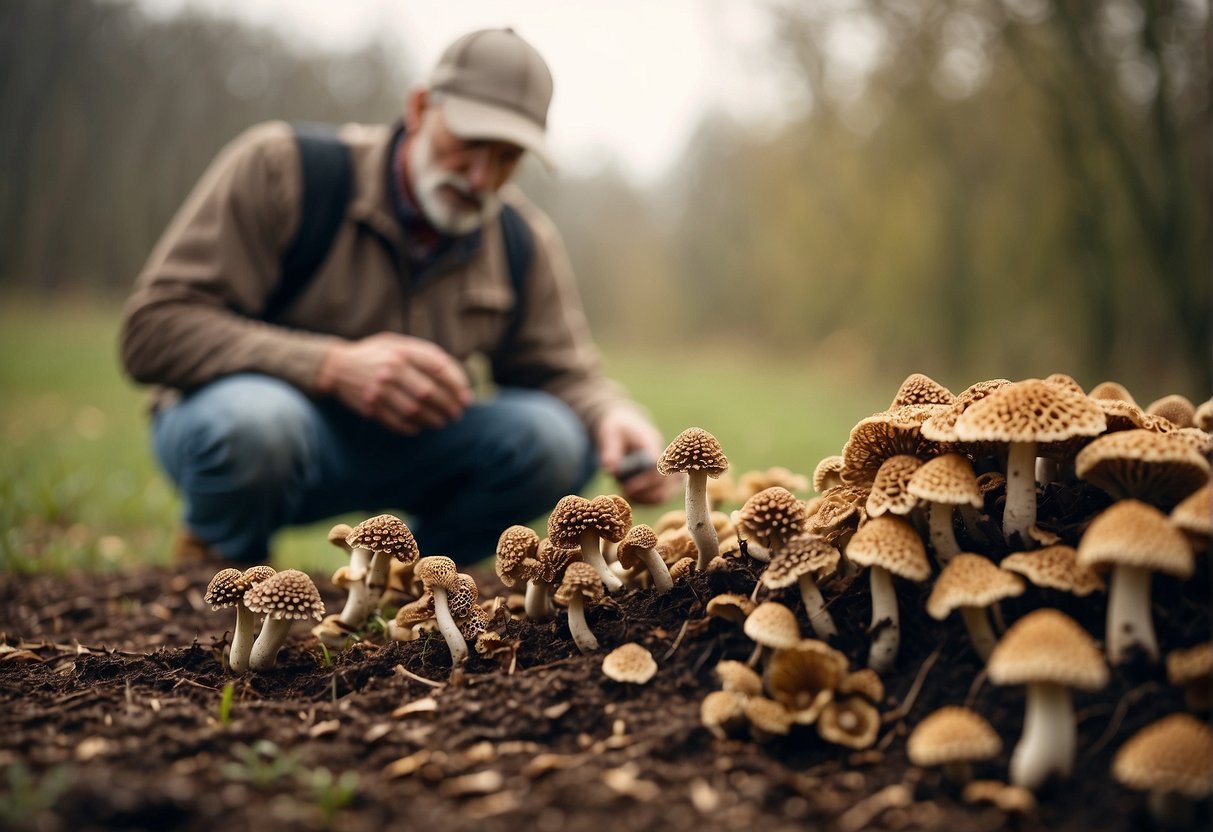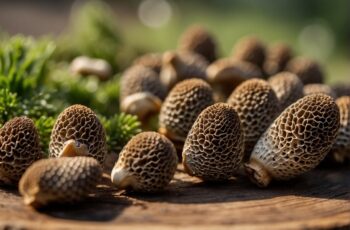Cultivating morel mushrooms can be an exciting venture, especially if you appreciate the outdoors and enjoy the unique challenge of growing these distinctive fungi. Known for their honeycomb appearance and savory taste, morel mushrooms are a sought-after delicacy among chefs and foragers alike. Unlike common mushrooms, morels require specific conditions to thrive, such as the right temperature, moisture, and substrate. With attention to detail, you can replicate these conditions to encourage morel growth, turning your garden or greenhouse into a productive mushroom patch.

Understanding and preparing for their cultivation is crucial, as morels are notoriously finicky and can be elusive even in their natural habitat. Morels are typically foraged in the wild, growing in forests and grasslands in the spring, but creating the right environment at home invites a personal harvest. Starting with high-quality spores, a well-prepared growing medium, and the patience to monitor and maintain the right conditions, you can learn the rhythms of morel growth and potentially enjoy a bountiful harvest.
Key Takeaways
- Morel mushrooms are a gourmet favorite that can be cultivated with careful preparation.
- Specific environmental conditions are essential for morel mushroom cultivation success.
- Patience and attention to detail are vital throughout the growing process.
Understanding Morel Mushrooms
In exploring morel mushrooms, you’ll uncover the intricacies of their growth cycle, the various species that dot different landscapes, their health benefits, and the rich cultural tapestry they’re woven into. Let’s unravel the mystery of these esteemed fungi.
Morchella Lifecycle
Morchella, the true morels, possess a distinctive lifecycle that sets them apart from other mushrooms. During their growth cycle, morels transition from spores to thread-like structures known as mycelium, and finally into the fruiting bodies you’re familiar with. Key to cultivating morels is understanding this cycle, as it dictates when and how these fungi will appear. Sclerotia, hardy masses of mycelium, are formed as a survival technique and can lie dormant until conditions are right for growth.
Morel Species and Habitat
Morel mushrooms are not a single entity but encompass various species, such as the black morel and yellow morel. These species thrive in different habitats, from woodlands to orchards. Morels are highly adaptive to their environment, which often aligns with areas affected by forest fires or disturbances, as these conditions encourage their growth. For successful morel cultivation, replicating these natural habitats is crucial.
- Black Morel (Morchella elata) prefers coniferous forests.
- Yellow Morel (Morchella esculenta) often found in hardwood forests.
Health Benefits and Uses
Morels are not only a culinary delight but also classified as medicinal mushrooms due to their nutritional profile. They are chock-full of antioxidants and vitamins, making them a healthful addition to your diet. Adding morels to your meals provides flavor while bolstering your intake of beneficial compounds.
Cultural and Historical Significance
The mystique of morel mushrooms resonates deeply in many cultures. These fungi have been foraged and revered for centuries, playing a role in local economies and traditions. The annual springtime hunt for morels is a treasured pastime for you and fellow outdoorsmen, reflecting the historical significance of these fungi within various communities around the world. The cultural and historical significance of morels also contributes to their allure as a sought-after prize in the wild.
Preparing for Cultivation
Before you start your journey to grow morel mushrooms, the groundwork is vital. You’ll need a clear understanding of the appropriate soil and environmental conditions, selection of the right grow site, and the necessary equipment and materials.
Soil and Substrate Requirements
Your success in cultivating morels heavily relies on getting the soil and substrate just right. Morels thrive best in loamy soil, which is well-draining with high organic matter. Your ideal mix should mimic the forest floor, containing a blend of compost, peat moss, wood chips, and a bit of sand for drainage. Maintaining a pH level between 6.8 to 7.2 is crucial; you can easily adjust this with lime or gypsum.
-
Texture and Composition:
- Aim for a 40% sandy loam: this ensures proper drainage.
- 60% should be compost and wood chips: this provides the nutrients and microenvironment.
-
Adjusting pH and Moisture Level:
- Test your soil’s pH; amend with lime to increase or sulfur to decrease.
- Regularly check your soil’s moisture using a simple moisture meter.
Environmental Conditions
When you’re aiming to foster fruiting, it’s crucial to replicate the morel’s natural habitat conditions. Humidity levels should be kept high, typically around 90%, and temperatures should generally range from 60 to 70 degrees Fahrenheit for optimal growth. For indoor cultivation, you’ll require a controlled environment that can maintain these conditions consistently.
Selecting and Preparing the Grow Site
Choosing the right grow site is paramount to the success of your morel cultivation. Morels have a symbiotic relationship with apple trees among others, so you should consider this when setting up outdoors. You want to ensure your grow site has adequate shade and shelter from strong winds which can dry out substrates and lower humidity.
- Site Characteristics:
- The presence of deciduous trees like apples can be beneficial.
- Ensure your site is protected from excessive wind and direct sunlight.
Equipment and Materials
The right tools can make the process smoother and increase your chances of a healthy morel harvest. Prepare a spore slurry for inoculation; this involves blending morel spores with non-chlorinated water and molasses to spread over your prepared beds. Equipment like a pH meter, moisture meter, and proper watering systems will be essential for monitoring and maintaining your morels’ habitat.
- Materials Checklist:
- Spore slurry kit: Typically includes morel spores and instructions.
- Cultivation tools: Watering equipment, pH and moisture meters, and protective coverings for weather management.
By adhering to these specifics, you’re setting yourself up for a rewarding cultivation experience and a bounty of morel mushrooms. Remember that attention to detail and patience are your best tools in this endeavor.
The Cultivation Process
Cultivating morel mushrooms requires attention to detail and an understanding of the growth cycle. Here, you’ll learn how to start your morel spawn, induce the fruiting phase, maintain and monitor growth, and finally harvest and store your morels.
Starting the Morel Spawn
To begin cultivating morels, you need to establish a morel bed with high-quality morel spawn. Mix the spawn with a substrate such as damp wood chips or sand in a shady area if outdoors, or in a controlled environment if growing indoors. The ideal soil pH should be slightly alkaline, around 7.0 to 8.0. Keeping the spawn moist and at a stable temperature between 60-70°F (15-21°C) is crucial during the incubation period.
The Fruiting Phase
Transitioning to the fruiting phase, your morel mushrooms will require a change in environment. If indoors, reduce light and slightly lower the temperature. Outdoors, nature will generally provide the necessary cues for fruiting. Humidity levels around 90% will encourage the mycelium to form fruiting bodies. It is at this stage that the patience you have cultivated is essential.
Maintaining and Monitoring Growth
While your morels are growing, maintain soil moisture through careful watering. A light molasses solution can be used occasionally to feed the morels and promote stronger growth. Regular checks are necessary to ensure that temperature and humidity remain within the required ranges, as these conditions are key to successful indoor cultivation and outdoor growth alike.
Harvesting and Storage
When your morels are mature, it’s harvesting time. Be gentle and cut them at the base to avoid disturbing the underlying mycelium. For storage, keep them in a paper bag in the refrigerator to maintain freshness. Remember, the key to a successful harvest is combining precise environmental control with the sheer enjoyment of watching your morels come to fruition.
Potential Challenges and Troubleshooting

Cultivating morel mushrooms is rewarding, yet you may encounter several challenges ranging from contamination to environmental factors, significantly impacting your harvest and yield.
Dealing with Contaminants and Disease
Contamination is a prevalent hurdle when growing morels. Bacterial contamination can lead to a whole batch being lost. To combat this, ensure your cultivation area is clean and check your substrate regularly. Disturbing telltale signs include off-odors or visible mold. If contaminated, it’s crucial to remove and replace the affected areas immediately.
Environmental Challenges
Your success rate can be greatly influenced by environmental components. Morels require specific conditions involving ash, temperature, and moisture levels. For outdoor cultivation, be mindful of the natural ash content or consider adding ashes if necessary. Moreover, morels thrive in cool, moist conditions — it’s vital to monitor and control these aspects for optimal growth.
Harvest and Yield Issues
When it comes to harvesting, timing and technique are everything. Morel hunters and foragers know the value of patience and precision. Keep in mind that overcrowded growing conditions can lead to smaller yields. Ensure there’s enough space between your morels for them to develop properly. If you’re cultivating outdoors, be aware of patents that may impact your ability to collect or sell morels.
Remember, each challenge presents an opportunity to refine your approach. With perseverance and adherence to best practices, you can enhance your morel mushroom growing success.


